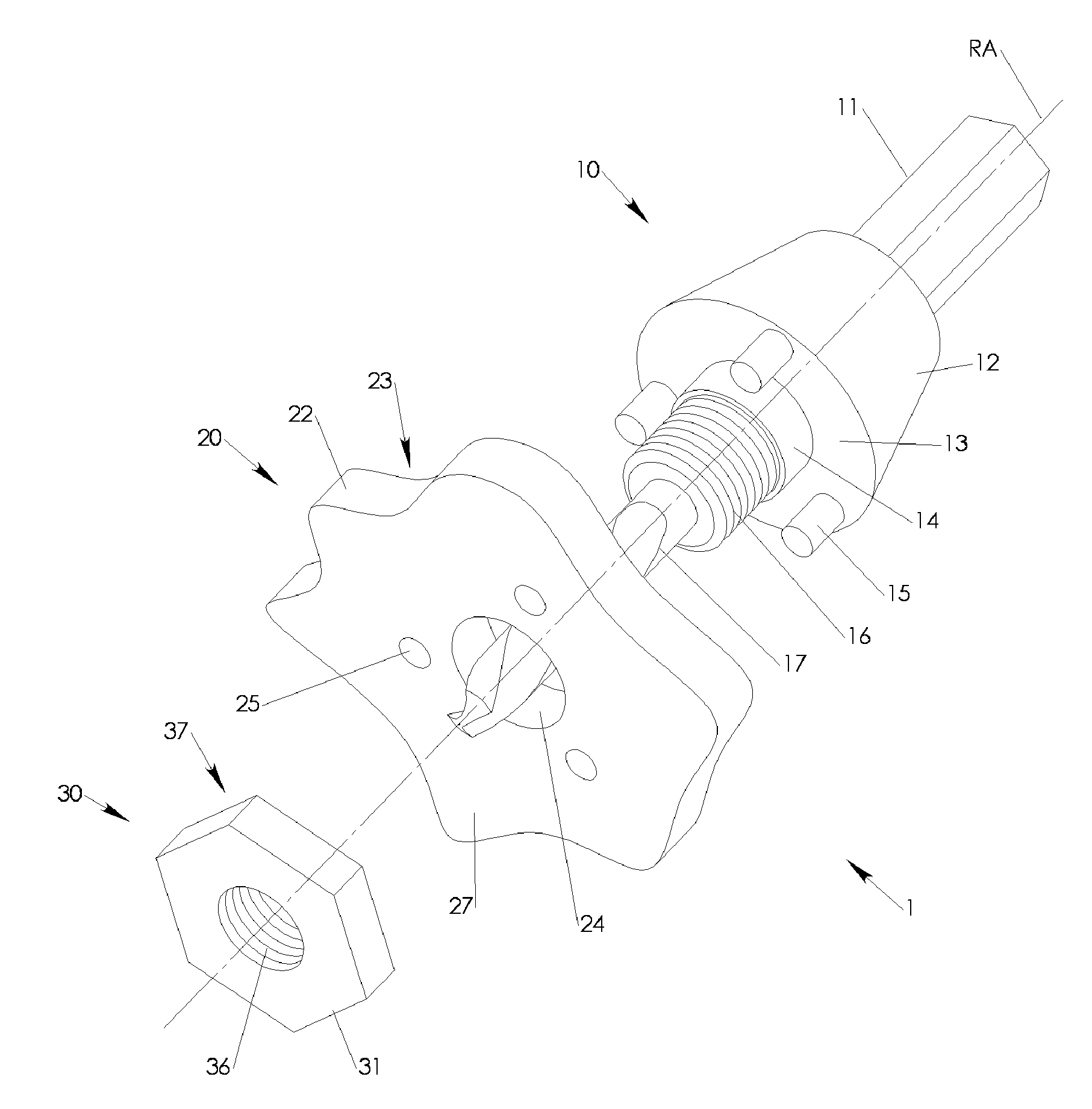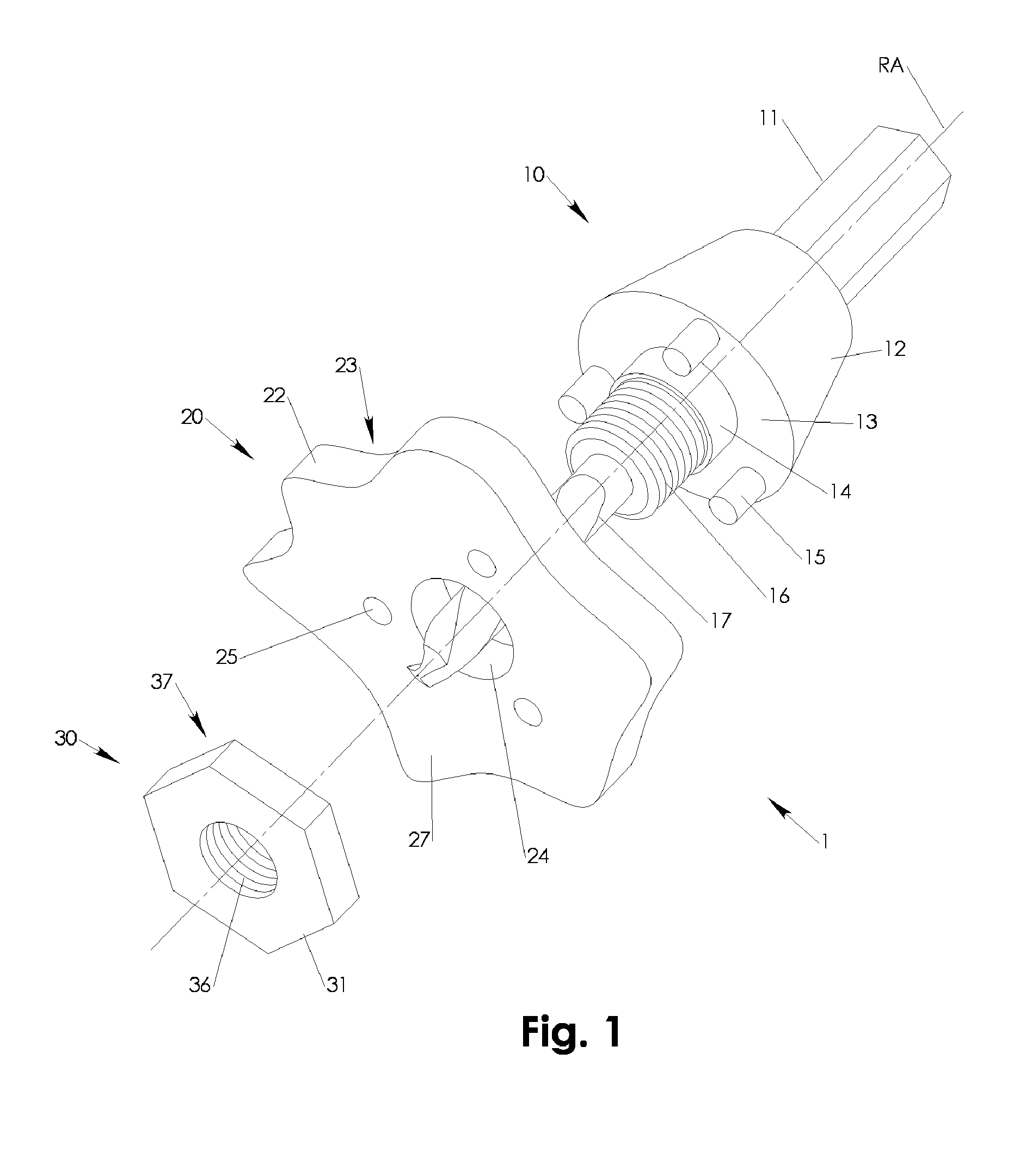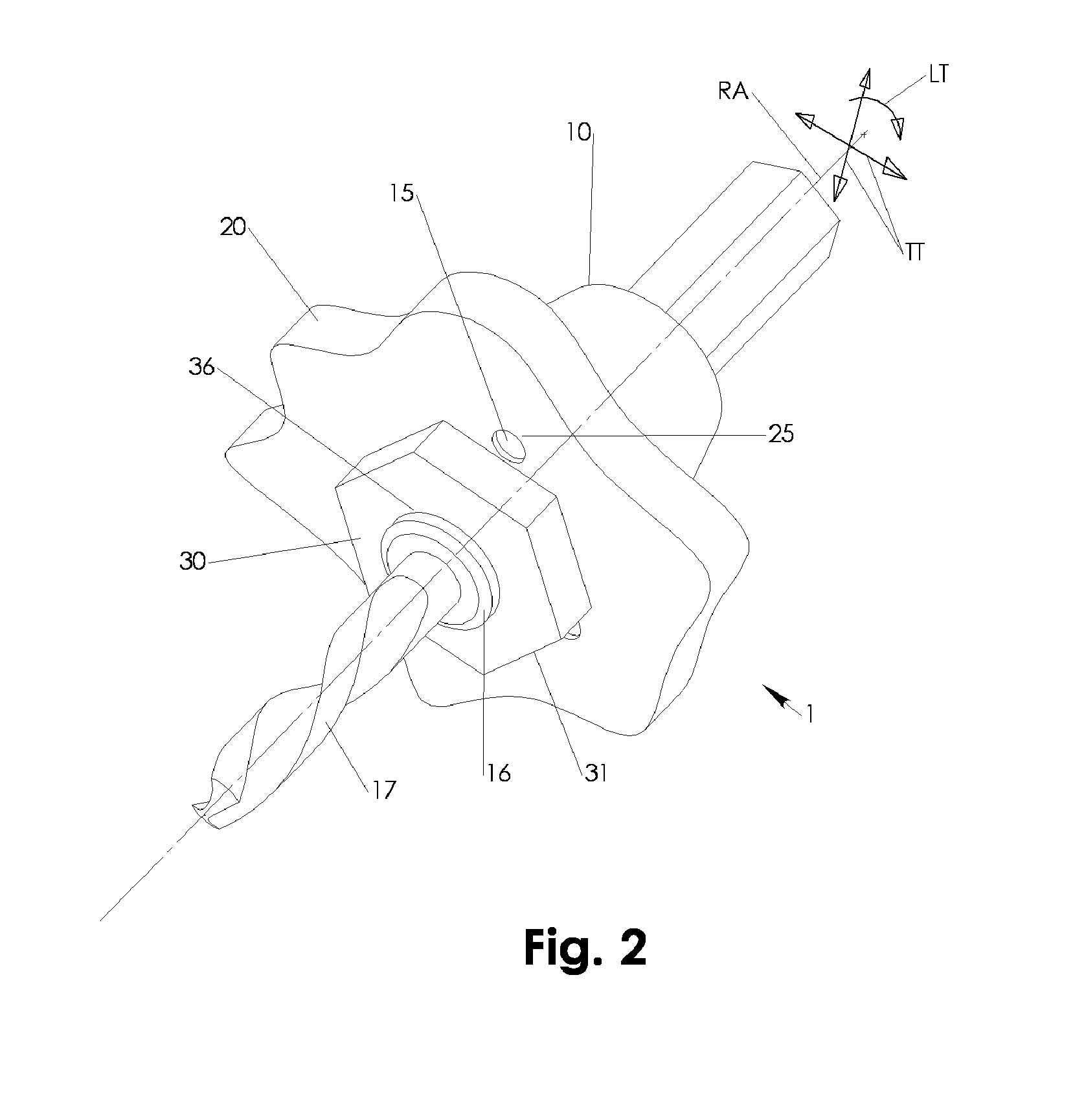Hole Saw Arbor System For Power Drill Assisted Tightening And Loosening
a power drill and arbor system technology, applied in the field of arbor systems, can solve the problems of reducing the friction between the cutting blade and the side wall, affecting the accuracy of the cutting blade, and the operator's hands being ripped out of the power drill, and achieves the effect of convenient rigid holding, convenient tightening and loosening, and simple and reliable attachmen
- Summary
- Abstract
- Description
- Claims
- Application Information
AI Technical Summary
Benefits of technology
Problems solved by technology
Method used
Image
Examples
Embodiment Construction
[0045] As in FIGS. 1 and 2, an arbor system 1 includes an arbor 10, a clamp body 20 and a tightening feature 30. The arbor 10 has an arbor body 12 having an arbor flanging feature, which includes according to a first embodiment an arbor face 13 and an arbor stud 14. From the arbor stud 14 extends a first thread 16 in the exemplary form of an outside thread of a thread bolt. The first thread 16 extends at least axially with respect to a rotation axis RA. Arbor stud 14 and first thread 16 are preferably also concentric with respect to the rotation axis RA. At least one but preferably three driving pins 15 extend from the arbor body 12 in an offset to the rotation axis RA. Opposite the driving pin(s) 15 extends a well known chucking stud 11 for concentrically chucking the arbor 1 with respect to the rotation axis RA in a well known chuck of a power drill or the like. From the arbor body 12 extends a well known pilot drill 17 concentric with respect to the rotation axis RA. The arbor 10...
PUM
| Property | Measurement | Unit |
|---|---|---|
| diameter | aaaaa | aaaaa |
| diameters | aaaaa | aaaaa |
| diameter | aaaaa | aaaaa |
Abstract
Description
Claims
Application Information
 Login to View More
Login to View More - R&D
- Intellectual Property
- Life Sciences
- Materials
- Tech Scout
- Unparalleled Data Quality
- Higher Quality Content
- 60% Fewer Hallucinations
Browse by: Latest US Patents, China's latest patents, Technical Efficacy Thesaurus, Application Domain, Technology Topic, Popular Technical Reports.
© 2025 PatSnap. All rights reserved.Legal|Privacy policy|Modern Slavery Act Transparency Statement|Sitemap|About US| Contact US: help@patsnap.com



